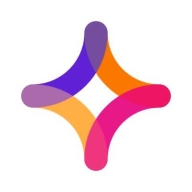

Jitterbit Harmony and Cloud Elements compete in the integration platforms category designed to improve business data connectivity. Jitterbit Harmony is often favored for its straightforward pricing and customer support, while Cloud Elements stands out for its feature richness and advanced connectors.
Features: Jitterbit Harmony offers an intuitive design, easy-to-use integration processes, and extensive APIs, enhancing scalability and reducing deployment complexity. It serves businesses of all sizes. Cloud Elements provides unified APIs, pre-built integrations across numerous applications, and handles complex integration needs effectively.
Ease of Deployment and Customer Service: Jitterbit Harmony offers a straightforward deployment model with strong customer service, easing the setup process for technical teams. Cloud Elements also offer comprehensive support but focus more on flexibility and extensive API management, requiring a more involved deployment.
Pricing and ROI: Jitterbit Harmony is known for transparent and cost-effective pricing, offering rapid ROI due to lower initial costs and faster deployment. Cloud Elements typically involves higher upfront costs, but the investment is worthwhile for complex integration needs, providing long-term value in data integration strategies.

Jitterbit Harmony is a comprehensive platform for data integration and API management, enabling seamless synchronization and automation across cloud-based and on-premises applications.
Users leverage Jitterbit Harmony to integrate systems like ERP and CRM applications, simplifying complex data workflows and enhancing automation. It supports efficient data migration and ensures smooth connectivity, handling diverse integration needs and helping streamline business processes. Users emphasize its drag-and-drop functionality and extensive templates, which contribute to its robust performance. However, improvements are needed in data mapping, error message clarity, and documentation, especially when dealing with large data volumes.
What are the key features of Jitterbit Harmony?Companies across retail, manufacturing, healthcare, and finance sectors use Jitterbit Harmony to integrate critical applications and automate workflows. In retail, it connects inventory systems with sales platforms, reducing manual effort. Manufacturers sync their ERP systems with supply chain software, optimizing operations. Healthcare organizations integrate patient management systems with insurance databases, streamlining patient care. Financial institutions use it to connect accounting software with banking systems, ensuring real-time financial data exchange.
We monitor all Integration Platform as a Service (iPaaS) reviews to prevent fraudulent reviews and keep review quality high. We do not post reviews by company employees or direct competitors. We validate each review for authenticity via cross-reference with LinkedIn, and personal follow-up with the reviewer when necessary.